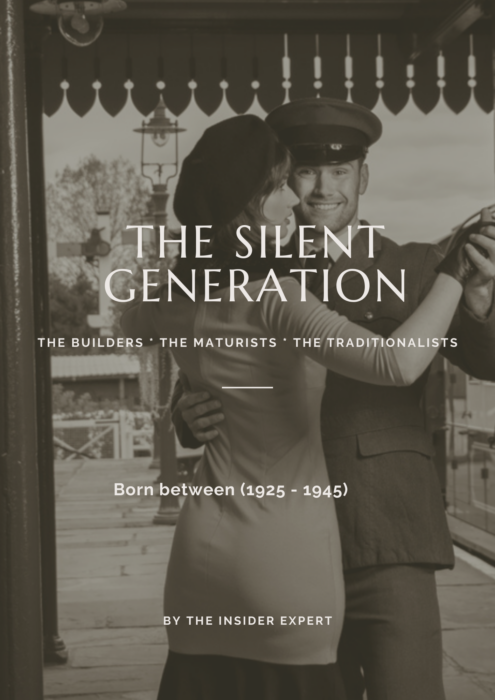So you want to find your target audience? Well, I’ll let you in on a not so hidden secret. If you write for everyone and try to make everyone happy without offending anyone, you are in danger of your book becoming lukewarm, and you will have an indifferent market. Imagine if your want to hit a bullseye, then you must focus your aim clearly on it, not just randomly shoot arrows hoping that one will hit the mark. Targeting the wrong readers by casting your net too wide or being vague may move some sales, but they won’t come back or recommend your book.
In this article, I am going to show you the following strategies on how to identify the type of audience you want to target:
- What is a Target Demographic/Audience?
- Knowing your Primary & Secondary Audiences
- Learn how to Identify your Type of Audience
- Generational Demographics
- Social Class Demographics
- Interesting Elements to Search on your Target Audience
- Parting Advice
“Your target market and their demographics realistically need to be in alignment with your own beliefs and morals, or you may have trouble reaching out to them – or keep them once others have entered the market.”
Michael Gerber
What is a Target Demographic/Audience?

I’m sure you’ve heard the term ‘target audience’, well basically it is the group of people likely to read your book. So, naturally, you will attract them if they’re interested in your subject or story. But the question for you as the writer is how do you identify them?
Your readers can be grouped in several ways, but one common way is demographics. That is by understanding the characteristics of your readers based on factors such as age, race, gender and predominantly how their life experiences see them interested in many of the same ideals as the book your writing.
Your target demographic is the common thread between your book and your readers. You need to find out what these are, so you can structure your book to provide what your readers hope to gain from reading it. Because you know what is important to your readers, they will appreciate your book more than anyone else since they will feel you speak directly to them.
To better understand this, you must first realise that you cannot target everybody, even if you want to. So, you think about the typical person who will buy your book and focus on what they would be looking for. It’s about knowing where your reader lives, what demographic they are in, what they do, what they like. It is not enough to just hear about them; you must know and understand how they feel and think about certain things.
Let us explore ways to identify your audience.
“Know your target audience. Always keep them at the forefront of your mind. Understand their lifestyle and what they are looking for. Gather their feedback and use it to tailor your approach. The voice of the consumer is an essential input into the development of any fashion business or blog.”
Imran Armed

In Package 2: Target Audience and Demographics for Books
This package is designed to help you maxime your book’s success on the market by gaining clarity around what you are writing, who it’s for, and how to connect with them meaningfully.
Knowing your Primary & Secondary Audiences

Your Primary Audience
To understand your primary market being your primary audience are those that will benefit the most from your book. It is essential to look at the different demographics and types of reading audiences. You can also look at your top four competitors’ readers, these authors are writing books similar to yours, so it’s a great opportunity to see who their primary audience is.
Your Secondary Audience
This market always piggybacks onto your primary audience. Advertisers target secondary markets all the time. Below is an example of the secondary markets when an advertiser promotes a children’s book.
- Primary Market
- Children
- Secondary Market
- Parents
- Grandparents
- Schools
- Therapists
- Daycare centres
- Libraries
Did you know that your agent or publisher is more responsive to your book proposal if you have identified both primary and secondary markets for your book?
“Thoughts are the gun, words are the bullets, deeds are the target, the bulls-eye is heaven.”
Douglas Horton
Learn how to Identify your Type of Audience

To understand what type of audience your book is targeting, let’s look at your reading audience segments.

Sub Cultures
Are small groups with unique-to-them beliefs and behaviours that operate within a larger culture. For example, you might be writing to a Young Adult (YA) audience, but a subculture of that could be: Emos, Grunge, Goths, Rastafarian, Skinheads or Hackers.

Super Cultures
These are people with a set of informally formed cultures that share values, backgrounds and rituals. For example, the Gamers, the Europeans, the Boat people, Cosmopolitanism, the Asians, the Christians, the Entrepreneurs.

Needs
These are the people with specific needs and wants that are met by reading your book. For example, they may want to lose weight, give up smoking or learn a new skill.

Fans
These people are priceless. They can be of any age and either gender. But they are passionate about your subject. They are the ones who feel like you wrote the book just for them, and they will build your readership for free by telling their friends, even tell the world about what they love about your book by creating YouTube videos about your characters, your storyline or your message.

Customers
These are the group of customers that repeatedly purchase goods or services from you.

Lifestyle
The lifestyle groups typically reflect how people see themselves or how others see them. For example, they may want to have an active, healthy, or green-conscious lifestyle.
“We are all different, which is great because we are all unique. Without diversity life would be very boring.”
Catherine Pulsifer
Generational Demographics

The people of each generation have their own key traits and mindset created by their formative experiences and historical events. Did you know they all have a communication preference and a signature product they identify with? If you write for a specific generational demographic, you need to determine what they’re passionate about and what they want to know and experience. Let’s look at some of the different generations:

(Born between 1925 – 1945)

(Born between 1945 – 1960)

(Born between 1961 – 1980)

(Born between 1977 – 1983)

Echo Boomers
(Born between 1981 – 1995)

(Born between 1995 – 2012)
“No book is really worth reading at the age of ten which is not equally – and often far more – worth reading at the age of fifty and beyond.”
C. S. Lewis

FREE Handout Instructions
STEP 1. Click the “Download Your PDF Handout Button.” It will redirect you to a new page where you can click the download icon to save this PDF Handout to your computer. Create a folder specifically for saving your ideas and save your PDF template in it.
STEP 2. Open the downloaded PDF handout in a PDF viewer
STEP 3. Save your files in your handout’s ideas computer folder so you can refer to them again and again.

In Package 2: Target Audience and Demographics for Books
We go into greater detail about each of the GENERATIONAL DEMOGRAPHICS with great handouts. Learn how to underpin your message to make it relevant to your readers.
Social Class Demographics

Your readers’ social standing is defined as a system of hierarchy based primarily on their economic position in society or the level of social value they may hold. Your reader can be born into their class structure or achieve their social status by their own efforts. Psychology researchers say that social status isn’t about the cars we drive, the money we make or the schools we attend; it’s about how we feel, think and act.
Let’s look at a few different social class demographics and see if your readers fall into any of them.

The Upper Class
They usually like one-of-a-kind objects, legacies and pedigrees and there are two levels according to their wealth and prestige.
- The Lower Upper Class is often referred to as ‘new money’ or money made from investments and business ventures.
- The Upper Upper Class is often referred to as those aristocratic and ‘high society‘ families with ‘old money’ who have been rich for generations.

The Middle Class
This social group is between the upper and working classes, including professional and business people often referred to as the ‘sandwich class’. There are two levels according to wealth, education and prestige.
- The Lower Middle Class is often made of less-educated people with lower incomes, such as managers, small business owners, teachers and secretaries.
- The Upper Middle Class is often made up of highly educated business and professional people with high incomes, such as doctors, lawyers, stockbrokers and CEOs.

The Lower Class
This social group is divided into two types:
- Are Employed but lack financial security. As a result, these working-class members earn a fairly low income.
- Are NOT Employed, which means they are unemployed, most of which are homeless and long term unemployed and receive the necessary welfare.

The White Collar Worker
Is a term used to characterise non-manual workers. In history, the clerical workers wore a white shirts, but manual workers wore blue shirts. They can be highly skilled and formally trained professionals such as Attorneys, Doctors, Architects, Engineers and Corporate Executives.

The Blue Collar Worker
Is a term for someone who performs manual work. Manual labourers typically prefer dark clothing, so the dirt and sweat don’t show on their clothing. Examples would be manual labourers, plumbers and mechanics.

The Pink Collar Worker
Works in the service industry with positions that involve relations with people. The term was coined in the late 1990s, but the meaning now encompasses all service jobs. Examples would be salespeople, waiters, secretaries and hairdressers.

The Green Collar Worker
Is employed in the environmental sectors of the economy. Examples would be organic farmers, landscape architects, environmental consultants and waste management workers.

The Grey Collar Worker
Often, these workers work beyond retirement. Basically, they are white-collar workers working part-time, or they have a specific degree but are holding a job that does not require such a high qualification. Examples would be IT professionals, healthcare workers and childcare professionals.

The Academia
Refers to people who are part of society, especially universities, connected with studying and thinking, or have the job of studying and research. It’s a world of teachers, schools and education or community concerned pursuing research, teaching and scholarship.

Entrepreneurs
Refer to people who exercise initiative by organising a venture to benefit from an opportunity. As the decision-maker, they decide what, how, and how much of the goods or services will be produced.
“I am one of those authors who consider it their highest honour and their highest liberty to have a completely untrammelled chance of using their pens to serve the working people
Mikhail Sholokhov

In Package 2: Target Audience and Demographics for Books
We go into greater detail about each of the SOCIAL CLASS DEMOGRAPHICS with great handouts. If you want to ensure every minute and ounce of energy you spend on your book pays dividends through publications, then this package is for you.
Interesting Elements to Search on your Target Audience

Gathering information on your target audience can be sometimes a little overwhelming, but remember there is an old saying “ask the right question to get the right answer”. So when you are searching for information about your target audience, maybe ask the following questions:
- What formats do your readers prefer?
- What type of keywords do your readers typically use?
- What topics interest your readers?
- What are your reader’s lifestyles?
- What drives your readers?
- What is the age of your reader?
- What are the needs of your readers?
“Focus on identifying your target audience, communicating an authentic message that they want and need and project yourself as an “expert” within in your niche.”
Kim Garst
Parting Advice

At the end of the day, because you want to attract as many readers as possible to your book, you will need to talk to your readers in a language that will respect and interest them. So, first, focus on the readers who will be directly interested in your story, characters or topic because you will engage more intensively and effectively with them. If you do that they will feel you have written it just for them; they can relate to it and be deeply impacted.
“A clear picture of who you’re writing for will show you what you should be writing about.”
Wentworth Financial Communications

Set yourself up for Success
Learn how to do research for a book and lay the foundations for a compelling and realistic story.
“There is only one winning strategy. It is to carefully define the target market and direct a superior offering to that target market.”
Philip Kotler







